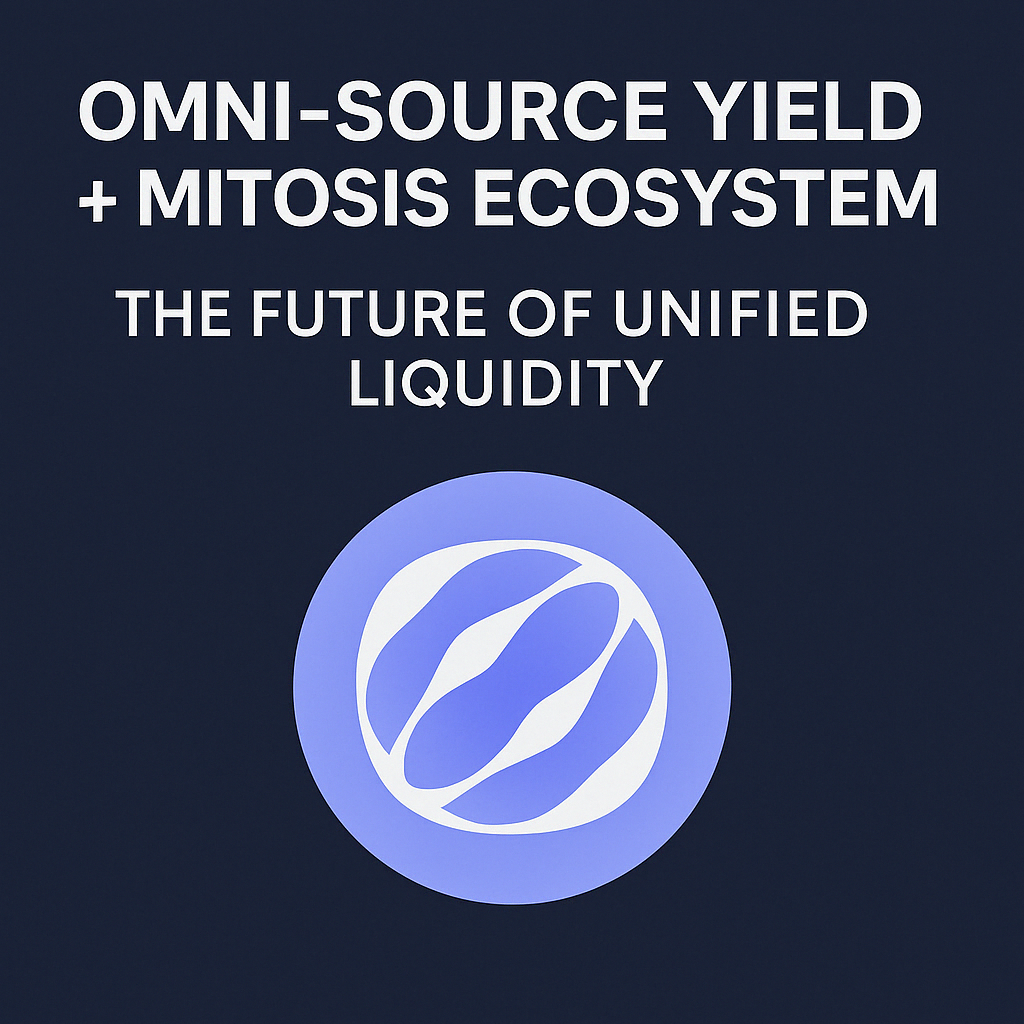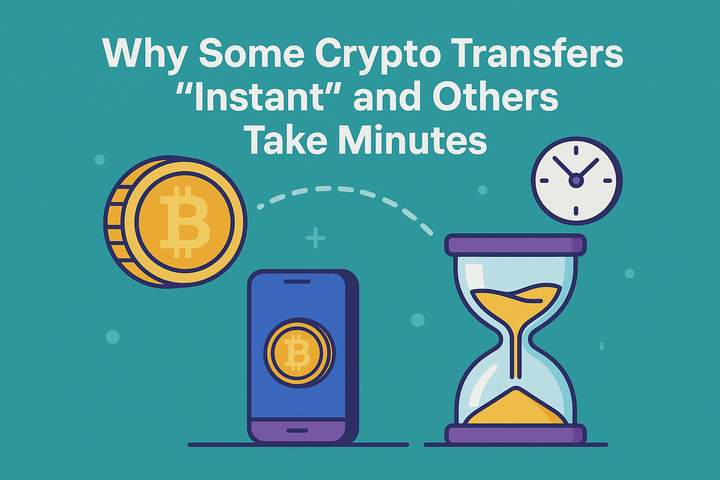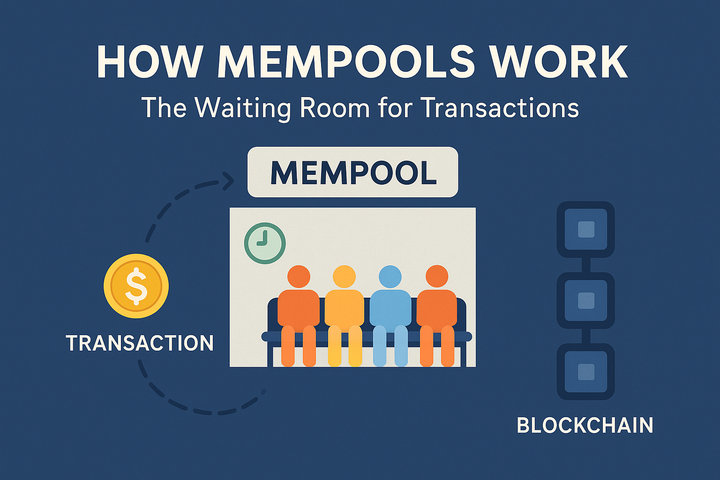Omni-Source Yield + Mitosis Ecosystem: The Future of Unified Liquidity

Introduction
Yield generation is no longer bound by the limitations of individual blockchains or isolated liquidity pools. Instead, we’re witnessing the emergence of a new paradigm—Omni-source yield—a model that taps into the fragmented yield opportunities across multiple chains and unifies them under a seamless, interoperable framework. At the forefront of this movement is the Mitosis ecosystem, which is pioneering a cross-chain, modular liquidity protocol that turns this vision into reality.
This article explores how Mitosis enables omni-source yield, why it’s critical for the future of DeFi, and how it transforms passive yield generation from a fragmented hustle into a streamlined, automated strategy.
The Fragmentation Problem in DeFi
The multi-chain era has brought unprecedented flexibility and innovation. But with it came an unintended consequence—fragmentation. Liquidity is now scattered across dozens of blockchains, each with its own ecosystems, bridges, and yield protocols. For a user or protocol to capture yield efficiently, they must navigate this complex jungle:
🔺Move assets across chain
🔺Manually interact with different yield protocols
🔺Deal with gas fees, bridge risks, and incompatible standards
This is time-consuming and capital inefficient. It’s also highly inaccessible for most retail users and even many institutions. Yield exists everywhere, but it’s isolated. The challenge is no longer finding yield; it’s aggregating it, mobilizing it, and doing it securely at scale.
That’s where omni-source yield comes in.
What Is Omni-Source Yield?
Omni-source yield refers to the ability to tap into yield opportunities across any chain, any protocol, and any asset, from a single point of access. Instead of users chasing APYs across networks, omni-source yield brings those opportunities to them, abstracting away the complexity. Imagine depositing USDC on one chain and earning yield that’s harvested from protocols on six other chains—automatically and without ever leaving the original chain. That’s the power of omni-source yield. It requires: • Unified liquidity layers to route capital efficiently
• Modular infrastructure that can plug into any yield source
• Trust-minimized interoperability
• Composable, cross-chain automation
This exact stack is what Mitosis is building.
Mitosis: The Cross-Chain Liquidity Engine Mitosis is a modular, cross-chain liquidity protocol designed to abstract away the friction of fragmented DeFi. It acts as a base infrastructure layer that enables assets to be moved, utilized, and optimized across chains with minimal trust assumptions and maximum composability.
Mitosis’s core primitives—Portals, Pools, and Programs—lay the groundwork for omni-source yield. 1. Portals: Cross-Chain Teleportation Portals are Mitosis’s mechanism for moving value across chains without wrapping or bridging. Instead of creating synthetic assets, Portals use a burn-and-mint model that allows for native asset mobility with maximum security. This means a yield protocol built on Mitosis can teleport user deposits across chains instantly and securely, positioning them wherever yield is best.
2. Pools: Unified Liquidity Mitosis Pools are cross-chain liquidity pools where users can deposit assets and receive Liquidity Provider Tokens (LPTs). These pools are chain-agnostic, and LPs receive exposure to aggregate liquidity across multiple networks, not just the chain they deposited on. This unified liquidity model is critical for omni-source yield. With shared liquidity, yield strategies don’t need to source capital chain-by-chain, they tap into a single liquidity layer that’s dynamically routed.
3. Programs: Modular Yield Strategies Programs are the smart contract layer on top of Mitosis that define how capital is used. Think of them as plug-ins: one program might execute a lending strategy on Aave (on Optimism), another might provide liquidity on Uniswap v3 (on Arbitrum), while another might stake ETH on EigenLayer (on Ethereum). Programs can be written to harvest yield across multiple chains, switching strategies in real-time based on ROI, risk profile, or governance inputs.
How Omni-Source Yield Works in the Mitosis Ecosystem Here’s an example.
1. Dextarr deposits USDC into a Mitosis Pool on Base.
2. Behind the scenes, the Pool routes her capital to a Program that provides stablecoin liquidity to a Curve pool on Arbitrum.
3. The Program also stakes a portion of the Pool’s USDC on a lending platform on Blast, earning additional rewards.
4. Yield generated from both chains is collected, consolidated, and re-deposited back into the Pool.
5. Dextarr’s LPT token reflects her share of all this cross-chain yield, with zero interaction on her part beyond the initial deposit.
She deposited in one place, but her capital worked across multiple chains, earning from multiple strategies—omni-source yield in action.
Why This Matters?
1. Passive Cross-Chain Yield Users no longer have to be DeFi experts to earn yield from across the ecosystem. Mitosis enables composable, passive yield generation across all of DeFi.
2. Capital Efficiency Instead of splitting liquidity across ten different chains and protocols, capital can be aggregated and deployed dynamically from a single source. This makes the system more efficient and the APYs more sustainable.
3. Permissionless Innovation Builders can write new Programs that tap into niche protocols, experiment with new strategies, or combine yield sources in creative ways. The infrastructure is open and modular.
4. Institutional Access Institutions and funds that require yield but don’t want to deal with chain complexity can deposit into a single Pool and get diversified, optimized yield strategies—perfect for treasury management.
Future Use Cases
Yield as a Service: Protocols could offer “omni-yield vaults” using Mitosis infrastructure. Imagine a stable coin project offering holders 5% yield sourced from five chains, powered by Mitosis Programs under the hood.
DAO Treasury Optimization: DAOs can deploy idle treasury assets into Mitosis Pools and let customized Programs optimize yield across DeFi, auto-adjusting based on governance inputs.
Custom Yield Portfolios: Users might one day choose from different yield “portfolios”, high-risk/high-reward, stablecoin-only, ESG-focused. All backed by cross-chain Programs that execute those mandates.
Mitosis Expedition: Mapping Yield Frontiers
The Mitosis Expedition, a community-driven initiative within the ecosystem, is focused on discovering new yield opportunities and mapping them back into Mitosis Programs. It’s part exploration, part development, and part governance. Each new strategy discovered and deployed by the Expedition expands the frontier of omni-source yield, making the protocol smarter and more valuable over time.
Conclusion
Omni-source yield is the inevitable evolution of DeFi in a multi-chain world. It takes the best of what DeFi has to offer composability, yield diversity, and openness—and removes the worst fragmentation, complexity, and inefficiency. Mitosis is the infrastructure making it possible. By combining modular yield programs with unified cross-chain liquidity, it creates a permissionless, programmable engine for omni-source yield that anyone can access and build on.
The future of yield is no longer isolated. It’s everywhere, all at once. And Mitosis is the bridge to that future.
Check out https://university.mitosis.org for more educative insights.



Comments ()